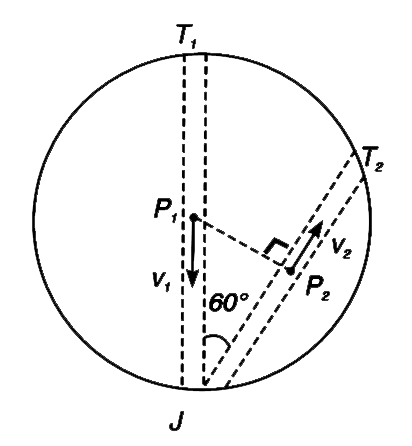Complete Solutions to Advance MCQs of chapter GRAVITATION of Class 11 book with complete answers and questions
| Class 11 | PHYSICS |
| Chapter | GRAVITATION |
| PHYSICS GALAXY | Advance MCQs |
| Number Of Questions | 17 |
| Academic Year | 2023-24 |
Two objects of masses `m` and `4m` are at rest at an infinite separation. They move towards each other under mutual gravitational attraction. If `G` is the universal gravitaitonal constant, then at separation `r`
View SolutionA planet of mass m is revolving round the sun (of mass `M_(s`) in an elliptical orbit. If `vecv` is the velocity of the planet when its position vector from the sun is `vecr`, then areal velocity of the positon vector of the planet is :
View SolutionIn Q.No 6.2, if the planet rotates in counter clockwise direction, then areal velocity has a direaction :
View SolutionA particle of mass m lies at a distance r from the centre of earth. The force of attraction between the particle and earth as a function of distance is F(r ),
View SolutionConsider a planet moving in an elliptical orbit round the sun. The work done on the planet by the gravitational force of the sun
View Solutionif a satellite orbits as close to the earth's surface as possible.
View SolutionSuppose universal gravitational constant starts to decrease, then
View SolutionA body is imparted a velocity v from the surface of the earth. If `v_(0)` is orbital velocity and `v_(e)` be the escape velocity then for :
View SolutionLet V and E be the gravitational potential field. Then select the correct alternative(s) :
View SolutionInside a uniform sphere of mass M and radius R, a cavity of radius `R//3`, is made in the sphere as shown :

View SolutionA solid sphere of uniform density and radius 4 units is located with its centre at the origin O of coordinates. Two sphere of equal radii 1 unit, with their centres at A(-2,0 ,0) and B(2,0,0) respectively, are taken out of the solid leaving behind spherical cavities as shown if fig Then:

View SolutionTwo tunnels - `T_(1) " and " T_(2)` are dug across the earth as shown in figure. One end of the two tunnels have a common meeting point on the surface of the earth. Two particles `P_(1) " and " P_(2)` are oscillating from one end to the other end of the tunnels. At some instant particles are at mid point of their tunnels as shown in figure. Then -

(a) Write phase difference between the particle `P_(1) " and " P_(2)`. Can the two particles ever meet?
(b) Write the ratio of maximum velocity of particle `P_(1) " and " P_(2)`.
View SolutionA satellite is revolving round the earth in an elliptical orbit :
View SolutionThe spherical planets have the same mass but densities in the ratio `1: 8`. For these planets the :
View SolutionAn artificial satellite is in a circular orbit around the earth. The universal gravitational constant starts decreasing at time `t = 0`, at a constant rate with respect to time `t`. Then the satellite has its:
View SolutionSuppose an earth satellite, revolving in a circular orbit experiences a resistance due to cosmic dust. Then
View SolutionP is a point at a distance r from the centre of a spherical shell of mass M and radius a, where `r lt a`. The gravitational potential at P is
View Solution
Advance MCQs questions and complete solutions for chapter GRAVITATION of GK PUBLICATIONS PHYSICS (HINGLISH) of Class 11